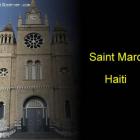ADVERTISEMENT
City
Les Anglais in Haiti focusing on Export
Les Anglais, located on the southwestern peninsula of Haiti, is a township situated in the Chardonnière Arrondissement, part of Sud Department. It lies at sea level with a population of 25,652, with three divisions that comprise it: Edelin, Pod, and Verona.
Les Anglais was settled by the British in 1774. The town became quickly allied with British troops, because the French wanted to re-institute slavery in the region, even though it had been previously outlawed.
Agriculture is the main economic force in town, and farmlands produce fruits, coffee, and tobacco. Non-government agencies have seen the capacity for growth in the area of exportation of foodstuffs. But in order for Les Anglais to be an exporter, a gathering of commerce and education forces, and knowledge of economic realities must coalesce for the vision to manifest. For instance, farmers must learn quality assurance control to make their products more marketable.
Maniche Village in Haiti
Maniche, a city-ship located within the Les Cayes Arrondissement, is under the Sud Department. Three divisions comprise the arrondissement: Melon, Dory, and Maniche. Maniche has a very small population of 7,380 residents, and sits in the western-central plain of the Haitian peninsula.
Maniche suffers from a very poorly-developed road system. Roads remain unpaved with only scattered pebbles and gravel to provide traction for vehicular traffic, usually four-wheel drives. Despite the condition of its transit infrastructure, the village sports a welcome sign for all visitors arriving there.
Maniche lies upon a verdant plain, not far from nearby hills and mountain peaks ringing the tiny village with dense foliage and plentiful tree stands. A surfeit of coconut trees also populates the terrain.
Injunction Against Petion-Ville Street Vendors
Petion-Ville has been having a problem with its street vendors on market days. Since the streets of the town are not set up for containment of wares, sellers lay down or set up their merchandise haphazardly on the streets. So many merchants fill up these impromptu market spaces with their wares there is no through-way for consumers to travel on. These pop-up markets take up as much room as a good-sized flea market in the U.S.
The difference between marketplaces in the U.S. and Haiti is organization of the physical space. In the States, vendors rent, or buy portable stalls that are then set up in an orderly pattern, allowing plenty of open space for foot traffic to move through. But in Haiti, in towns like Petion-Ville, no such rental equipment exists, or designated spots for merchandise display. Moreover, the marketplace has no manager to oversee operation of the vending space.
Port-Salut as a Tourist Destination
Port-Salut is the Haitian tourist industry's best-kept secret. Located on the southern-most coastal part of the Tiburon Peninsula, it lies close to the western tip of it. Ironically, though it contains paved routes, very few tourists know of its existence. Beaches that embrace the village are made of white sand, fine and almost sugar-like in texture. Favorite beaches of the Haitian residents living there include Plage Macaya and Kalico.
A famous personage, who was born, raised, and resides there is former Haiti President Jean-Bertrand Aristide. Electrical service is not dependable in Port-Salut and the natives retire and arise, according to the sun's setting and rising.
Roche-a-Bateau, an Inspired City in Haiti
Roche-à-Bateau is a township located in the Côteau Arrondissement, under the Sud Department, with a population of 13,336 residents. It is located on the southwest part of the Tiburon Peninsula of Haiti. Three communes comprise it: Rose-Beaulieu, Renaudin, and Boclos-Martinette.
The lore of the name Roche-a-Bateau has two versions. In the first, it is said an exploring sailor chanced upon Roche-à-Bateau port. Learning the topography of the village, his imagination saw it resembled the shape of a boat, or bateau in French. In the second version, the harbor teemed with sea vessels from foreign shores, all bringing exports to market. In order to keep boats from hitting each other, the merchantmen placed rocks in the bottoms of the boats, and the name of the village, Bateau, then became Roche-à-Bateau, or boat of rocks in English.
Arniquet Community in Haiti
Arniquet is a cityship located in the Port-Salut Arrondissement, under the Sud Department. With an estimated population of 8,000, it lies 583 feet above sea level. Located on the south-western part of the Tiburon Peninsula, it faces the Caribbean Sea. In its time zone, the sun in Arniquet shines nearly 12 hours a day, from 6:30 am to 6:00 pm.
Like most small villages across Haiti, Arniquet has no paved roads, no air strip, and electricity is infrequently delivered. Because of this undependable service, the villagers retire when the sun sets and get up when the sun rises.
Bainet, a Paradise on Earth in Haiti
Bainet, located on the south-eastern portion of the Tiburon Peninsula, is a coastal town. The capital of Bainet Arrondissement under Sud-Est Department, its population numbers 166,000 residents, most of whom inhabit the mountains. It is a strong coffee-growing area, yielding premium coffees unlike any other in the Caribbean. Farmers grow crops in rich mineral soil, with a vast selection of fruits produced, among them peach, cherry, coconut, mangoes, guava, apricot, and avocado.
The people of Bainet, big-hearted and friendly, travel by horses, mules, or on foot. Because the village is not on a power grid, the community uses kerosene lamps at night. With no TV or radio available, families often gather together and regale one another with stories. They hand down folklore from grandparents to parents, children, grandchildren, and even great-grandchildren in some instances.
Ile a Vache a Lovers' Paradise
Lying off the south-western end of Haiti, Ile a Vache is the tiniest island of the mainland. Administered under the Sud Department, it takes up 20 square miles of land acreage, a very green island with plenty of swamp areas, containing 10,000-15,000 occupants. Île à Vache is said to be the most scenic place in the entire Caribbean region. Two resorts on the island attract the tourist trade: Abaka Bay and Port Morgan.
The history of the island began with the Spanish conquest, whose settlers named it Isla Vaca. Two hundred years later, France won possession of Hispaniola's western half, Haiti, and Isla Vaca became Ile a Vache.
Chardonniere, a town in Haiti
Chardonniére, a township in the Chardonniére Arrondissement, is located within the Sud Department. A coastal town of some 21,000 plus inhabitants, it sits at sea level on the southwestern peninsula of Haiti. Four divisions comprise Chardonniére: Bony, Chardonniére, Dejoie, and Randal.
The township is bordered by the Massif de la Hotte Mountains, lying northward, the town of Port-a-Pepper on the eastern side, and the Caribbean Sea lying southward. Port-au-Prince and Les Cayes lie further away. The sea almost completely surrounds Chardonniére, giving it an island-like feeling. The beaches are made of sand so white, it seems sugar-like. Not only does the town look out at vast vistas of water, but it has water coursing through it, the Rivierè Chardonniére. Because of the town's stunning natural beauty it is a tourist magnet, helping to fuel the local economy.
The Cayemites, Two of Haiti's Smallest Islands
The Caymites are two tiny islands placed just above the southwest coastline of Haiti, a peninsula that juts into the Gulf of Gonave. They are part of Grand-Anse Department, whose biggest metropolitan area is Anse a Macon.
The larger island, Grande Cayemite, sits east of Petite Caymite, both encompassing a total of 17 square miles. A miniscule population of 5,000 inhabitants lives on the islands, their nearest neighbor, Jérémie, lying 22 miles west.
Grand Cayemite and Petite Caymite share many features with other small coastal villages on the Haitian mainland: a subtropical climate and dazzling white-sand beaches that sift through your fingers like sugar. Both Grand and Petite Caymite's topography is made up of lush green vegetation and magnificent rock formations that have endured over the ages.
Our objective is to share with you news and information about Haiti and the people of Haiti. Traditions, habits and the way we were or grew are alive in this site. We highly recommend that you Subscribe to our Newsletter and also share with us some of the things that are memorable and made us unique people.

 Informative Marketing and Advertising in the Haitian Community
Informative Marketing and Advertising in the Haitian Community  Haitians are a Proud People
Haitians are a Proud People  Haitian Creole Translation
Haitian Creole Translation  Saint Marc, Haiti
Saint Marc, Haiti  Black Friday Shopping Season
Black Friday Shopping Season